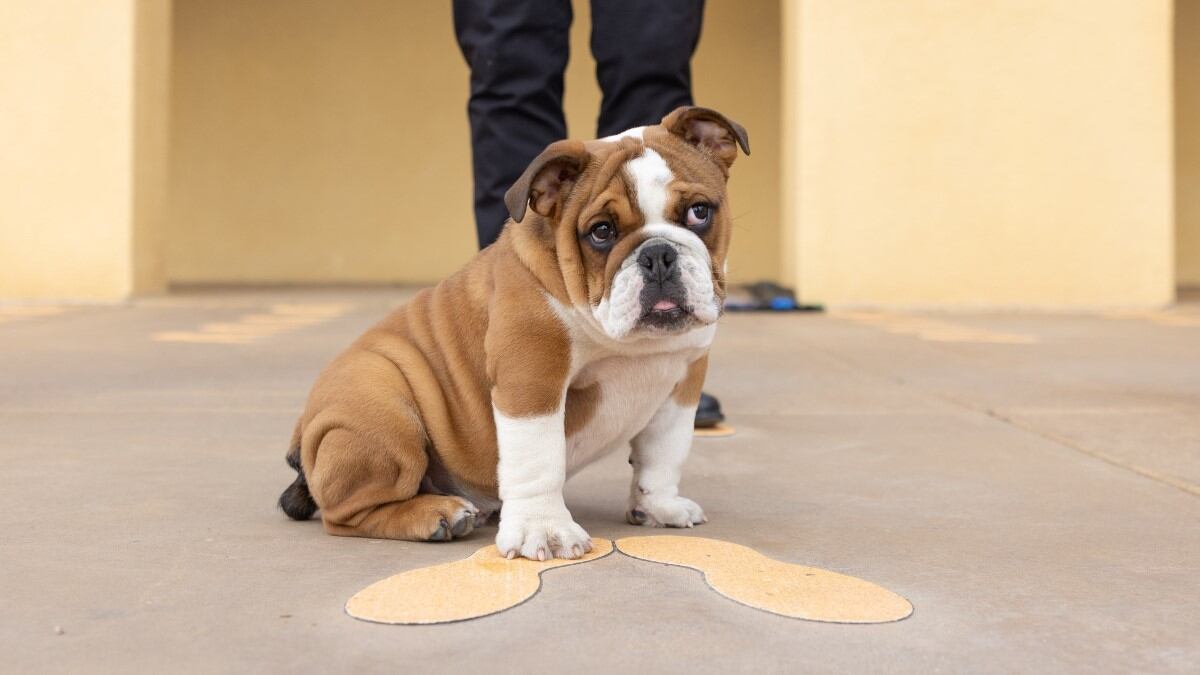There’s a new top dog at the Marine Corps’ West Coast boot camp.
Pvt. Bruno, a 5-month-old English bulldog, on Friday assumed the role of official mascot to Marine Corps Recruit Depot San Diego, taking over from Cpl. Manny, 4, also an English bulldog.
Manny has been a constant presence at the post’s many ceremonies and events since May 2019, according to his handler, Cpl. Max Noel.
Bruno has been training hard for his new role.
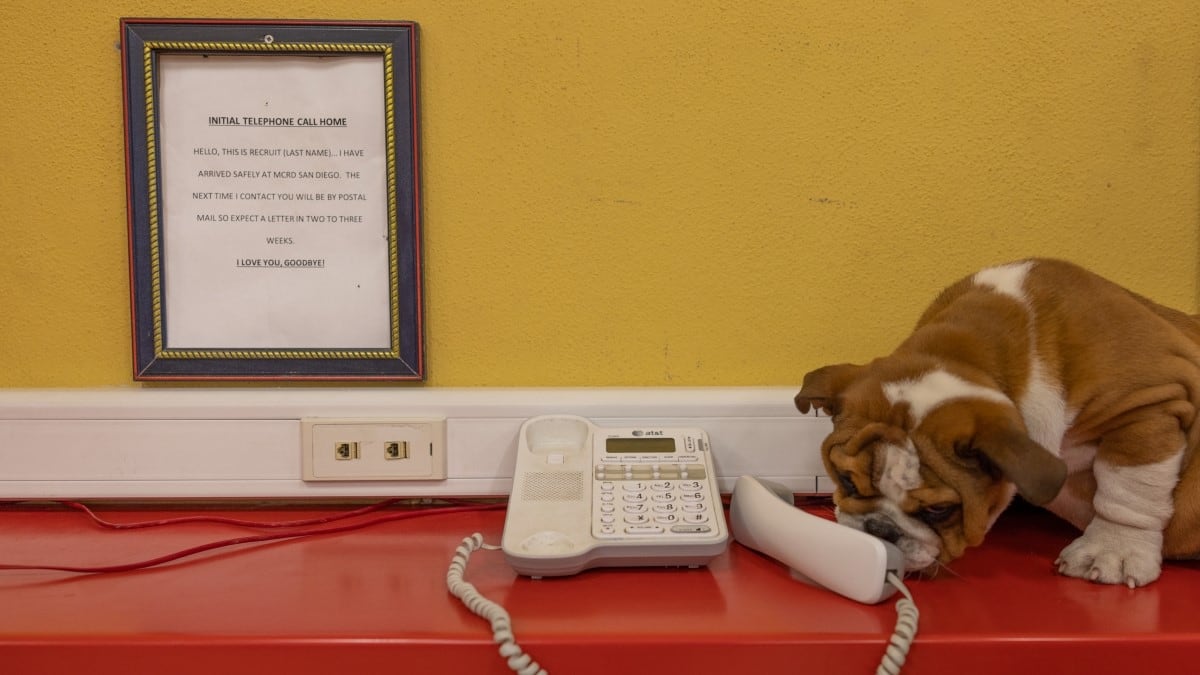
Tongue-in-cheek photos posted to the Defense Visual Information Distribution Service depict Bruno going through “recruit training” — getting an initial haircut, sniffing the phone that recruits use to make their one call home and going on a final “hike,” which for him lasted about 400 yards.
His training has actually entailed adjusting to the training grounds (he loves the ropes) and working with military police dog handlers on how to be sociable and responsive to commands, even in spite of the noise that accompanies big ceremonies, according to Bruno’s handler, Sgt. Tyler W. Abbott.
“He definitely has more freedom,” Abbott said of Bruno, now that the dog has earned the Eagle, Globe and Anchor. “And he gets to call himself a Marine. Every time he barks, he sounds more like a Marine and less like a recruit.”
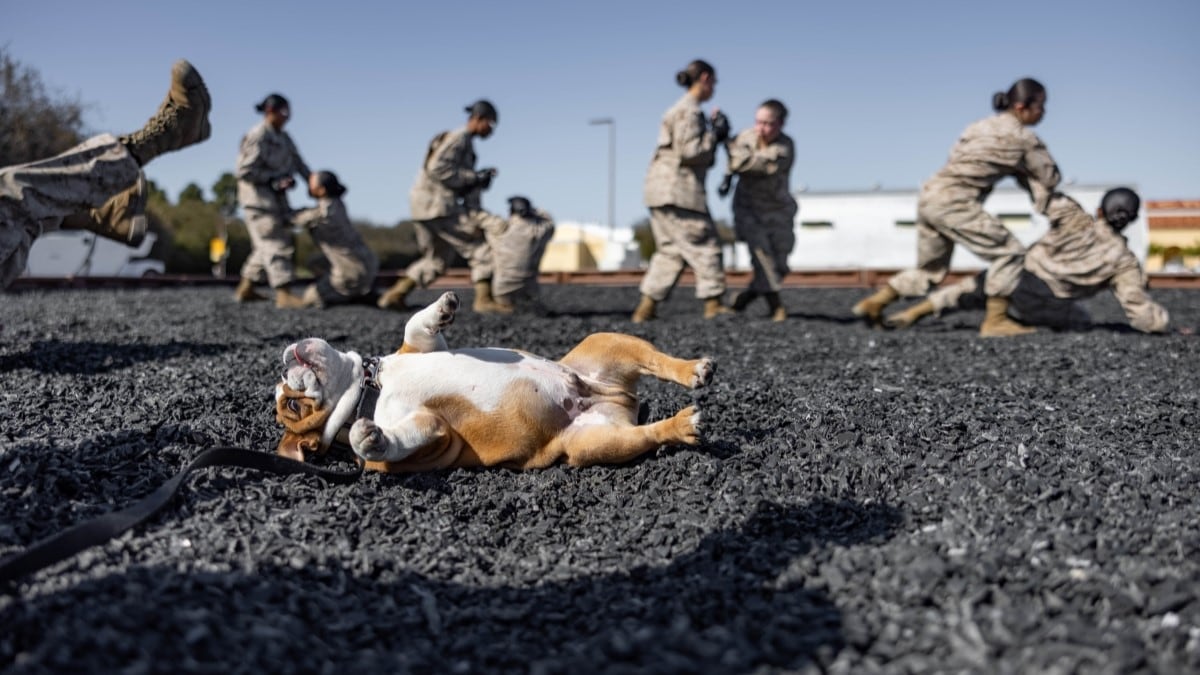
Once the communications strategy and operations shop decided it was time for Manny to retire, the military police K-9 handlers went to breeders in the area to assemble a list of puppies with the qualities befitting a Marine mascot. Those included an outgoing temperament, friendliness and responsiveness, according to Abbott, who also is the platoon sergeant for the depot’s communication strategy team.
“The mascots are swarmed by the children, and they need to be able to be pet by these children without freaking out or biting a kid,” Abbott said.
An extremely friendly, energetic pup, Bruno fit the bill.
Now that Bruno has become Abbott’s roommate, field day ― the period of cleaning that precedes weekly barracks room inspections ― already has proven more challenging for the sergeant.
One recent field day, Abbott had set his shoes up in a line in preparation for his room inspection. He returned from a five-minute shower to find his shoes scattered across the room and Bruno chewing on his boots.
“Coming out of the shower and seeing my shoes all over the place and him just sitting there with his goofy grin,” Abbott said. “It was a very adorable moment.”
Though Manny has more experience living in the bricks, he also keeps field day interesting for his roommate.
“Manny absolutely loves participating in field day,” Noel said. “I’ll be sweeping up all his hair and then he’ll come stare at me and drool into his hair. So now I’m sweeping drool and hair, and he just thinks it’s play time, and kind of bites the broom.”
Despite his at times unsatisfactory behavior on field day, Manny made corporal a month before Noel, who during that period had to stand at parade rest while the noncommissioned officer ate chow.
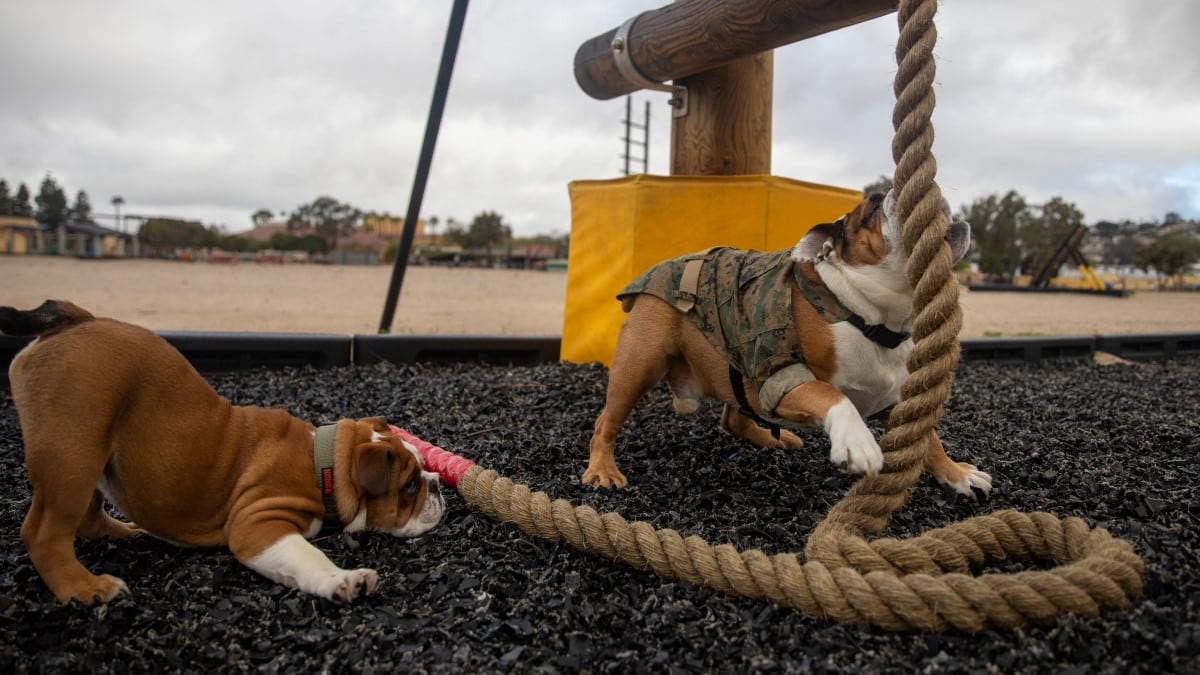
In his retirement, Manny will relocate to Philadelphia, where he will live with a soon-to-retire master sergeant whom he knows and loves, according to Noel.
“He will just get to live out his life as a civilian and no longer have to put on the uniform and go to work from 0730 to 1600 every day,” said Noel, a videographer for the depot. “He just will basically be free to play with toys 24/7 and no longer have to do graduation ceremonies.”
The mascots are meant to boost the morale of the recruits, Marines and families who pass through the depot, Noel said.
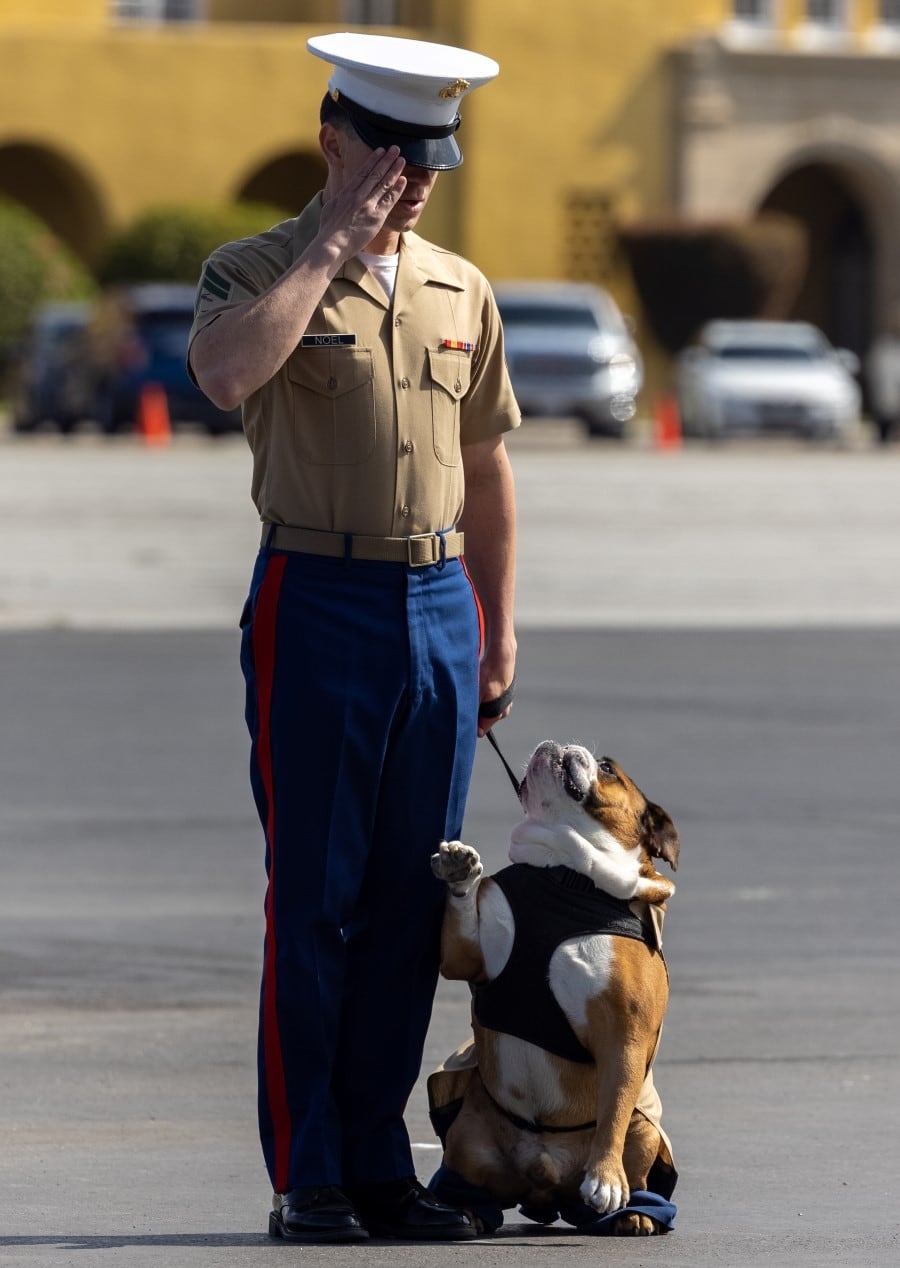
The mascots’ names honor figures in Marine Corps history.
Manny is named for Sgt. Johnny R. Manuelito Sr., one of the original 29 Navajo code talkers, who used a code based on the Navajo language to communicate secret information during World War II. Bruno’s namesake is Maj. Gen. Bruno A. Hochmuth, the first U.S. general officer to die in Vietnam.
Bulldogs have been a symbol of the Marine Corps since at least World War I.
A probably apocryphal but oft-repeated story tells that German forces, awed by the Marines’ prowess at the Battle of Belleau Wood in France, took to calling them “teufel hunden,” or devil dogs. In truth, the term was likely first used by the Marines themselves, a historian with the Marine Corps History Division previously stated.
In 1921, then-Brig. Gen. Smedley Butler purchased a bulldog, who would become known as Sgt. Maj. Jiggs, to fill the role of the Quantico, Virginia, football team’s mascot, according to the San Diego depot’s website.
Since then, dozens of bulldogs have served as mascots for the Marine Corps and its posts. The East Coast’s recruit depot at Parris Island, South Carolina, has its own mascot, Pvt. Opha Mae II.
And perhaps the most prominent living Marine bulldog is Pfc. Chesty XVI, the official mascot of the Marine Corps, who recently picked up the E-2 pay grade after half a year in the service.
Irene Loewenson is a staff reporter for Marine Corps Times. She joined Military Times as an editorial fellow in August 2022. She is a graduate of Williams College, where she was the editor-in-chief of the student newspaper.
